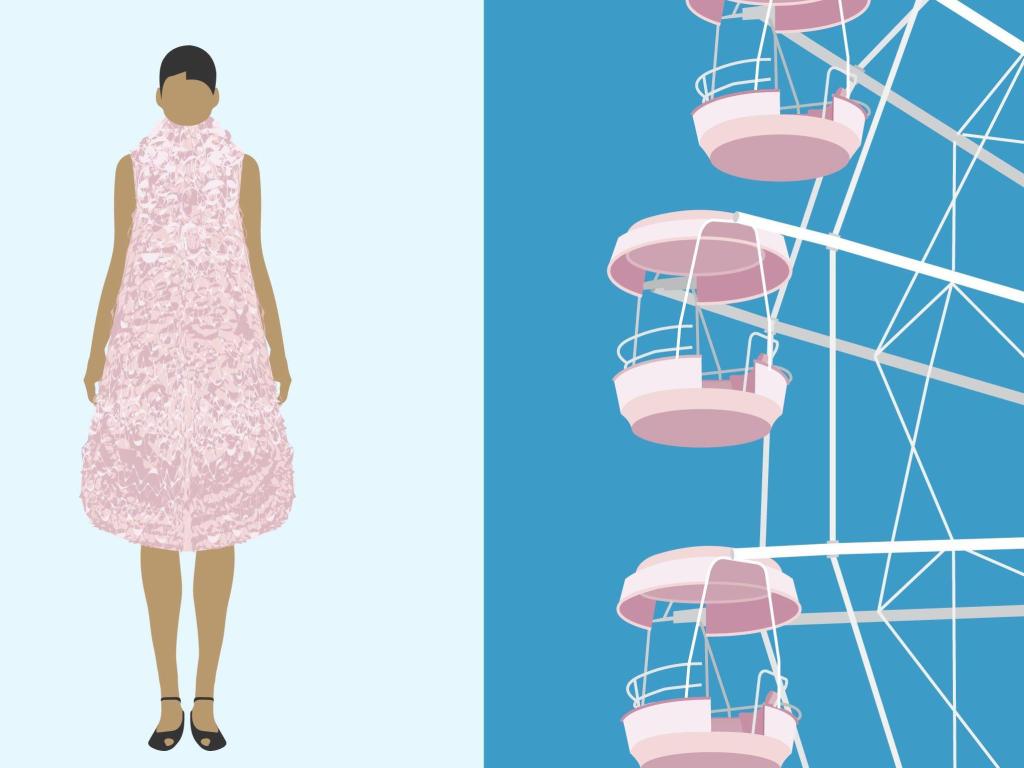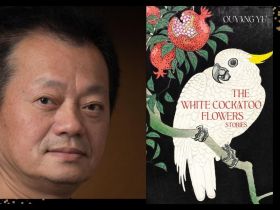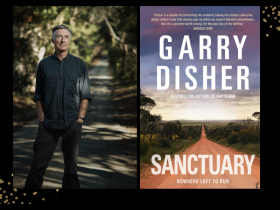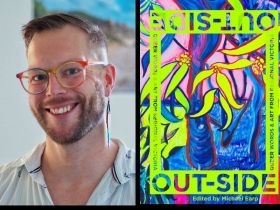Image: Ode to Clothes by Australian illustrator Wendy Fox, courtesy the artist.
Earlier this month Magabala Books, in partnership with the Kestin Family Foundation, announced a new award for Indigenous illustrators – The Kestin Indigenous Illustrator Award. The prize includes cash, a mentorship, and the opportunity to illustrate a story written by renowned author and illustrator, Sally Morgan.
Surprisingly, the award is the first of its kind for Indigenous illustrators. It was created in part to fill the demand from the Education sector for Indigenous childrens’ books.
Rachel Bin Salleh, Publisher, Magabala Books, told ArtsHub: ‘Market demand for our children’s books has increased and in recent years, we have had an increasing number of enquiries from other publishers looking for Indigenous illustrators.
‘Why? We believe more Australians want to know and connect with Indigenous stories. Increasing demand from the education sector may be influenced by the Aboriginal and Torres Strait Islander cross-curriculum priority in the National Curriculum,’ Salleh said.
The demand for diverse illustrators and uniquely Australian stories is evident, and Magabala have taken the first steps to fill that gap – but what other challenges are Australian illustrators facing?
A strong community but lack of homegrown initiatives
Like many other artists, Australian illustrators create their own community and support networks, often in lieu of government support. Lauren Anderson, from not-for-profit organisation The Style File (funded by the Australian Society of Authors (ASA)) said such organisations play a vital role in the illustrating community.
‘The Style File is a showcase that provides Australian illustrators with an opportunity to highlight their portfolios to local publishers. There is a strong illustrating community in Australia, with a number of organisations designed to support illustrators, such as [Society of Children’s Book Writers and Illustrators] SCBWI, Illustrators Australia and Comics Guild,’ she said
‘However, there is still plenty of room for growth in the scope of awards and other professional opportunities for illustrators. The ASA is currently looking into ways to expand the Style File, in order to create as many opportunities as possible for illustrators throughout Australia to develop their skills and grow their income,’ Anderson said.
Member-funded organisations thrive because of their communities. Sonia Kretschmar from Illustrators Australia told ArtsHub: ‘We aim to encourage networking as well as being a source of promotion and information; to this end we organise exhibitions as well as awards and members guide publications.
‘We would love to have more support for our initiatives … on the whole, though, relevant initiatives from Government are few and far between – Illustrators seem to fall between the cracks.’
Why can’t students study illustration?
Kretschmar also emphasised the need for stronger relationships with the education sector. ‘We see education as an important ally in the growth of illustration here in Australia – TAFE is really the only formal option for aspiring illustrators wanting to study or join the industry, so of course the funding challenges [the TAFE sector] has faced over the past few years have been of concern.’
The concern isn’t just about higher education. Kretchmar said, ‘There is also a fluctuating supply of elective subjects in Tertiary study as well.’
Bin Salleh said: ‘Many of the artists and illustrators we [Magabala] work with have not had formal artistic training or any prior knowledge about book illustration. There are currently no university courses that have a component for book illustration in Australia. That’s why mentorships and a serious commitment to professional development are so important.’
Marc Martin is an author and illustrator of five children’s books. He is disheartened by the lack of available educational options but said other avenues to a career in illustration are possible: ‘You have to be savvy and a lot smarter in how you go about things.’
He said of his own career path: ‘My background is actually in graphic design, and I worked as a graphic designer for a few years, and I found myself doing more and more illustration work within those design briefs,’
Over time Martin’s love for illustration grew. ‘I would try to sneak in illustrations within those design briefs and I thought if that is the direction I wanted to go down, I would try and focus on just illustration.’
Wendy Fox is an award-winning illustrator who has worked internationally. She said that while there are educational opportunities, unfortunately most would-be illustrators have to look elsewhere.
‘In the States, they’ve been doing [formal training] for a long time … For example if you were to go to Art school – at any given Art school, the big ones – you could study design and major in illustration. We don’t offer that because we don’t have the industry … and that’s the other thing, illustrators don’t have the option to teach illustration.’
Learning from the International model
Looking to our neighbours abroad it seems that more opportunities are available for illustrators, ‘Places like New York City where things are more established, the New Yorker have used really brilliant, wonderful illustrations on their front covers and probably will forever. It’s completely ingrained into the culture – and for an illustrator that is very special. No Australian newspaper uses editorial illustration like the way either European or American newspapers do,’ Fox said.
The lack of homegrown initiatives and opportunities means Australian illustrators are increasingly finding they have to compete in the international market.
Martin said: ‘There are international awards out there but you do have to do your research, but it’s also another way to try and get your work out there. It can become a little bit of [extra] income or exposure and recognition for your work.’
Businesses like The Jacky Winter Group expose Australian illustrators to a wider audience. They also show Australian artists that there is a demand for their work, Fox explained: ‘The one thing which has probably made a big change [for illustrators], with businesses like Jacky Winter growing as much as they have – and they have so many people on their books – it’s a nice source of work now and then. And they have expanded internationally … they’re having to tap into clients overseas because I think a lot of [Australian] businesses don’t hire a lot of illustrators.’
Kretschmar also applauded the work that agencies do, ‘There has been a growth of agencies in Australia, such as The Jacky Winter Group, that have really injected life into the sector.’
Donations, partnerships and festivals pave the way
As well as assistance from such agencies, not-for-profit initiatives and member-funded models are also fuelling growth in this sector – and they’re quietly leading the charge in showcasing Australian illustrators.
On a national scale, a number of established initiatives championing local illustrators continue to gain momentum, such as The Children’s Book Council of Australia, which holds Children’s Book Week annually as well as a range of exhibitions and other events.
Other activities include the Copyright Agency’s Cultural Fund – leading the way with Reading Australia, a free online resource for educators to better promote and spread the love for Australian stories.
Melbourne Writer’s Festival is holding an Illustrator in Residence event over the course of the 2017 Festival, in the Atrium at Federation Square. In the three-hour sessions audiences can watch illustrators work live. Such events give illustrators the visibility they need and provide audiences with a valuable insight into their practice.
Small initiatives generate more than just work for illustrators; they create solid foundations for their careers.
Reflecting on the significance of the Kestin Indigenous Illustrator Award, Bin Salleh said: ‘We are hoping news of the award will spark the interest of aspiring Indigenous illustrators who haven’t known where to get support, and highlight to Indigenous visual artists that children’s picture book illustration is another career option they can explore.’
In the coming years, it is to be hoped similar initiatives are adopted to encourage growth across all facets of this important Australian sector.





